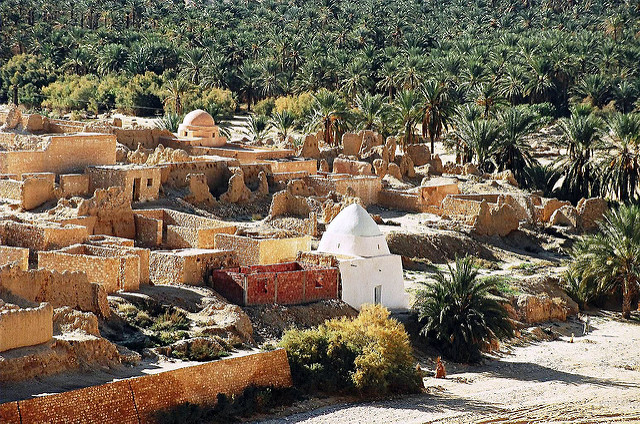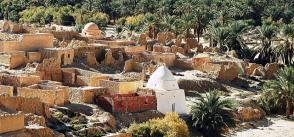
Rehabilitating oases in Tunisia
Tunisia’s Tamerza Oasis is the largest of more than 200 oases located across the country’s four southern governorates.
These oases, which account for more than 40,000 hectares of agriculturally productive lands, have a long history of cultural and economic importance to the country. Despite this, Tamerza and other oases have struggled to remain relevant in modern times, as the process of urbanization has driven much of the younger population to cities in search of better wages and an increased quality of life. With a lack of farmers to care for the land, parts of the oasis have fallen into a state of neglect. Wild boars are a destructive problem on unclaimed lands, and a prolonged lack of attention by farmers has taken a toll on water resources, resulting in loss of tree cover and decreased agricultural productivity.
To address growing concerns around the long-term viability of the oasis, a GEF-funded, World Bank-implemented project began in 2014 with the goal of promoting sustainable management of oasis land, as well as diversification of farmer livelihoods. Supported by a grant from the World Bank Program on Forests (PROFOR), the Bank aided the development of the first national strategy for the sustainable development of Tunisian oases, which the Tunisia government adopted in 2014. A dedicated action plan has been developed to help the implementation of the strategy. The project, called the “Oases Ecosystems and Livelihoods Project,” is the first project aiming at initiating the implementation of the strategy action plan, it is better known locally by its French acronym, GDEO (Gestion durable des écosystèmes oasiens en Tunisie). Successful implementation of the project would result in reduced migration of its residents to urban areas, as well as increased agricultural production and a higher incentive for farmers to work the land.
Read the full article via GEF - Global Environment Facility.
[Photo by Délirante bestiole | Flickr]







